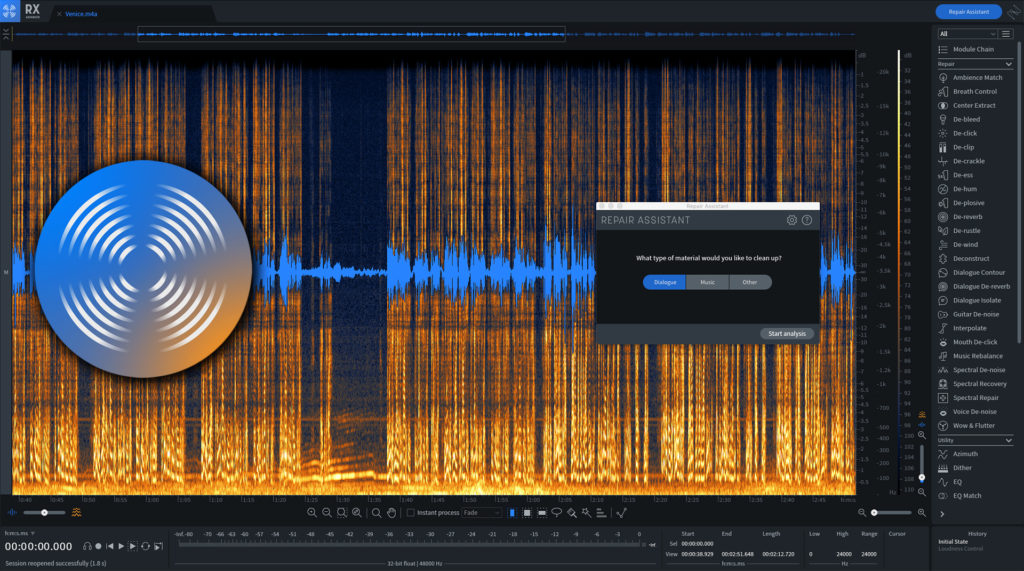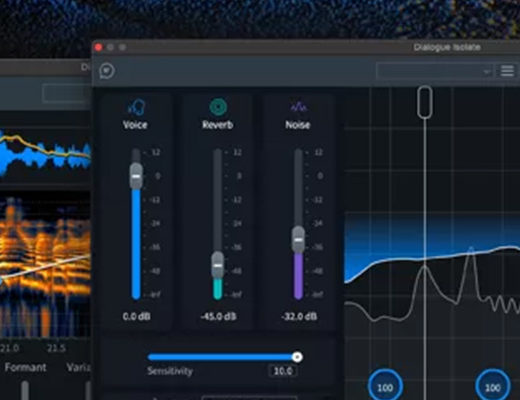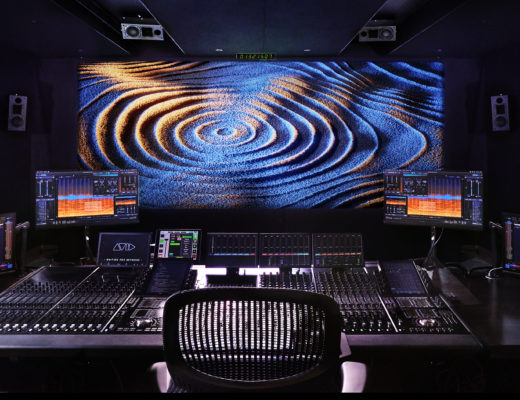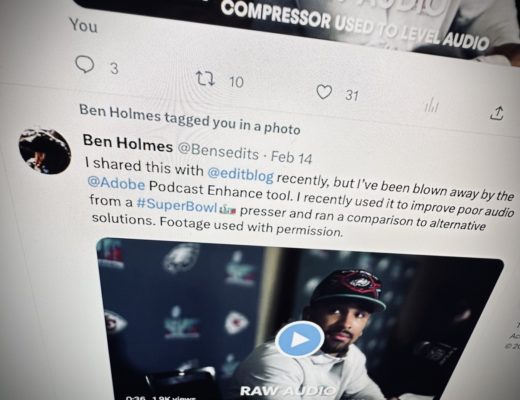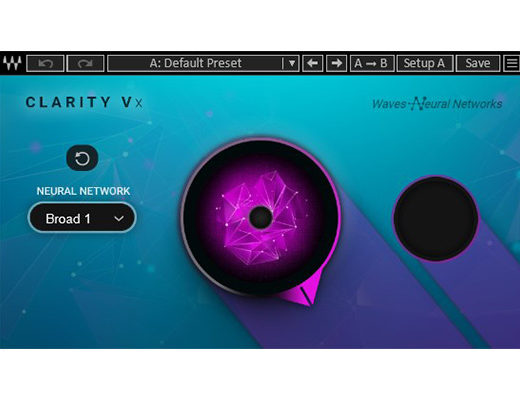iZotope RX 8
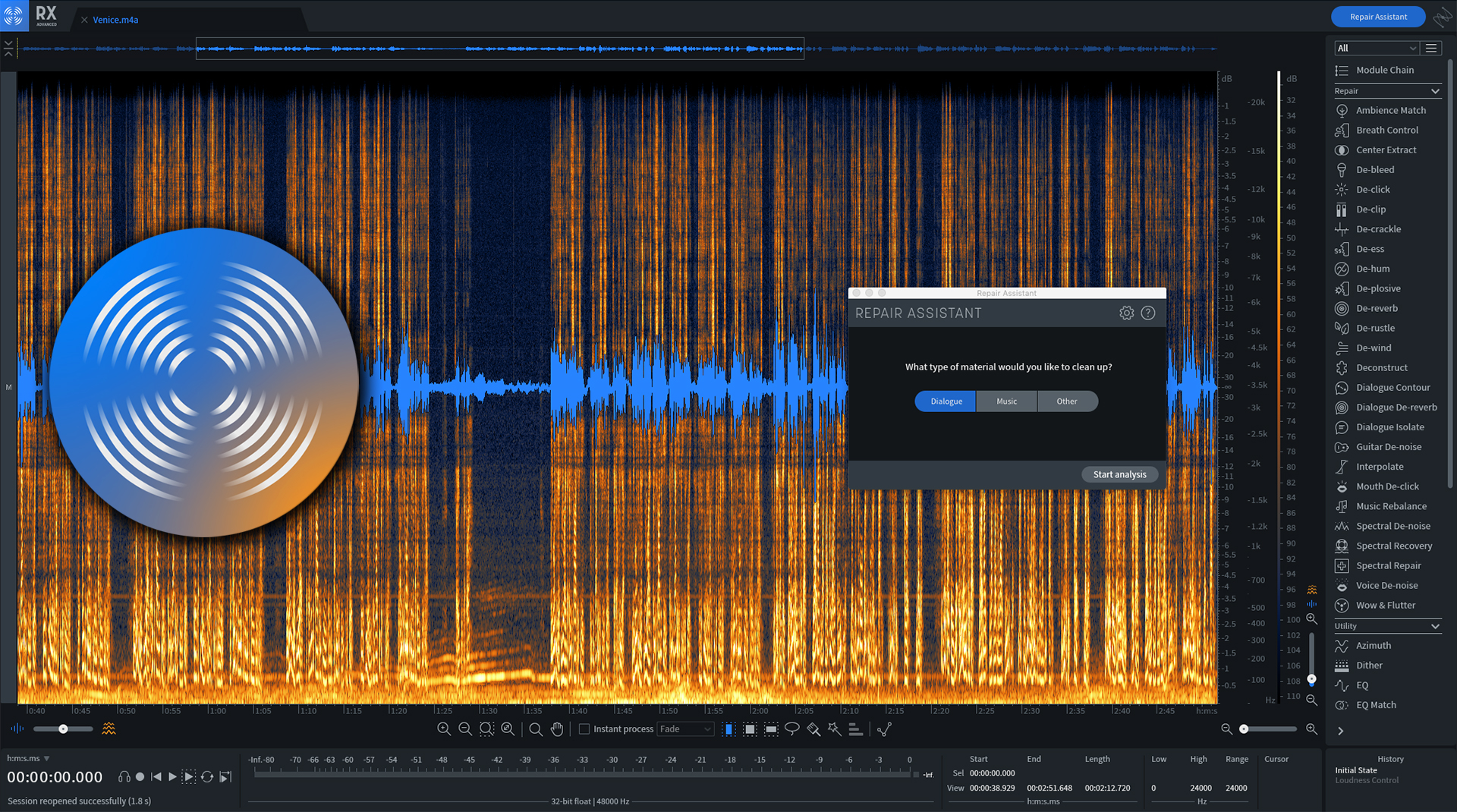
Most digital audio and video editing applications come with a robust set of audio plug-ins, but many editors and mixers prefer to augment those with third-party effects. iZotope is the go-to brand for many who need best-in-class audio effects tools. The company offers a number of comprehensive audio products and software suites, but most video editors will primarily be interested in RX 8. It’s the latest version of iZotope’s renowned audio repair product.
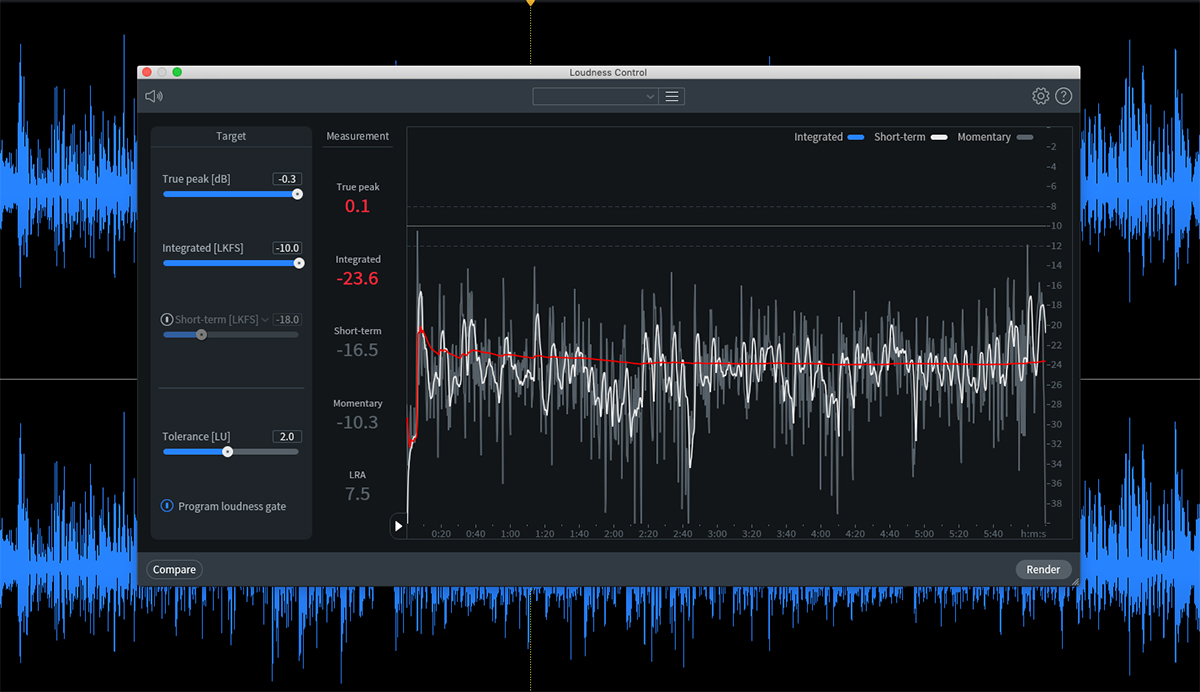
iZotope offers its products, including RX 8, in Elements (“lite”), Standard, and Advanced versions, giving the user the option to pick the feature set that best fits their budget. Some video editing software also comes bundled with one or more of the iZotope Elements products. iZotope’s Neutron, Nectar, and Ozone each install as a single plug-in that iZotope likes to call a “mothership.” This means that you apply a single instance of Nectar to a track and it becomes a container. Then, configure the processing modules that you need within the Nectar interface. In concept, it functions like a channel strip or effects rack. The filters work in real-time within the framework of the DAW or NLE.
An audio editor plus plug-ins
RX 8 is different in that it installs over a dozen individual AU, VST, and AAX plug-ins, instead of a single “mothership” plug-in. In addition, a standalone application – the RX 8 Audio Editor – is also installed. That’s where the real power is.
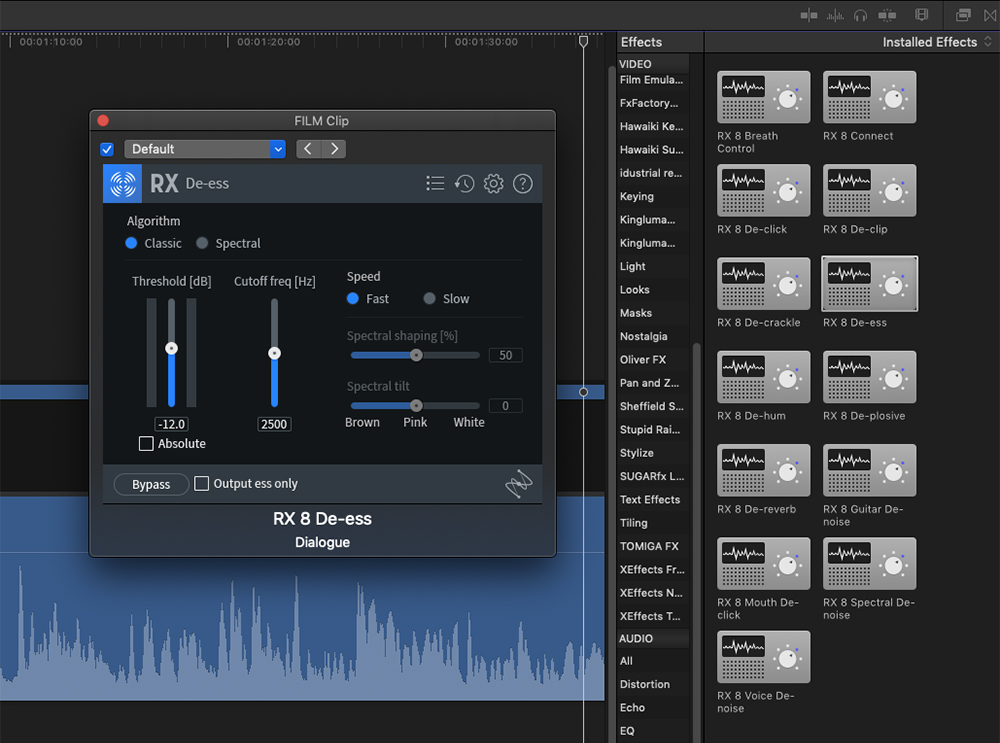
If you are working in Audition or Premiere Pro, for example, and need to apply a De-clip or De-ess effect to a voice-over recording, then you can simply apply that individual iZotope filter to the track. However, when more extensive processing is required, then it’s time to use the RX 8 Audio Editor application. Most of the time you’ll find that it’s best to process a track in this external application first and then import the processed track into your editing application.
You can use the RX Connect plug-in within some DAWs and NLEs to roundtrip the track between the host and the RX 8 application, much like Adobe’s dynamic link function. Unfortunately, the RX Connect roundtrip doesn’t work in current versions of Adobe Premiere Pro and Apple Final Cut Pro X. Instead, use a “reveal in Finder” command to locate the track, open it in RX 8, process it, and then bring it back into the host to replace the original clip.
What’s new in RX 8
iZotope has been continually improving the RX technology from one version to the next and RX 8 is no exception. Besides interface changes and improved performance, RX 8 includes three new processing modules.
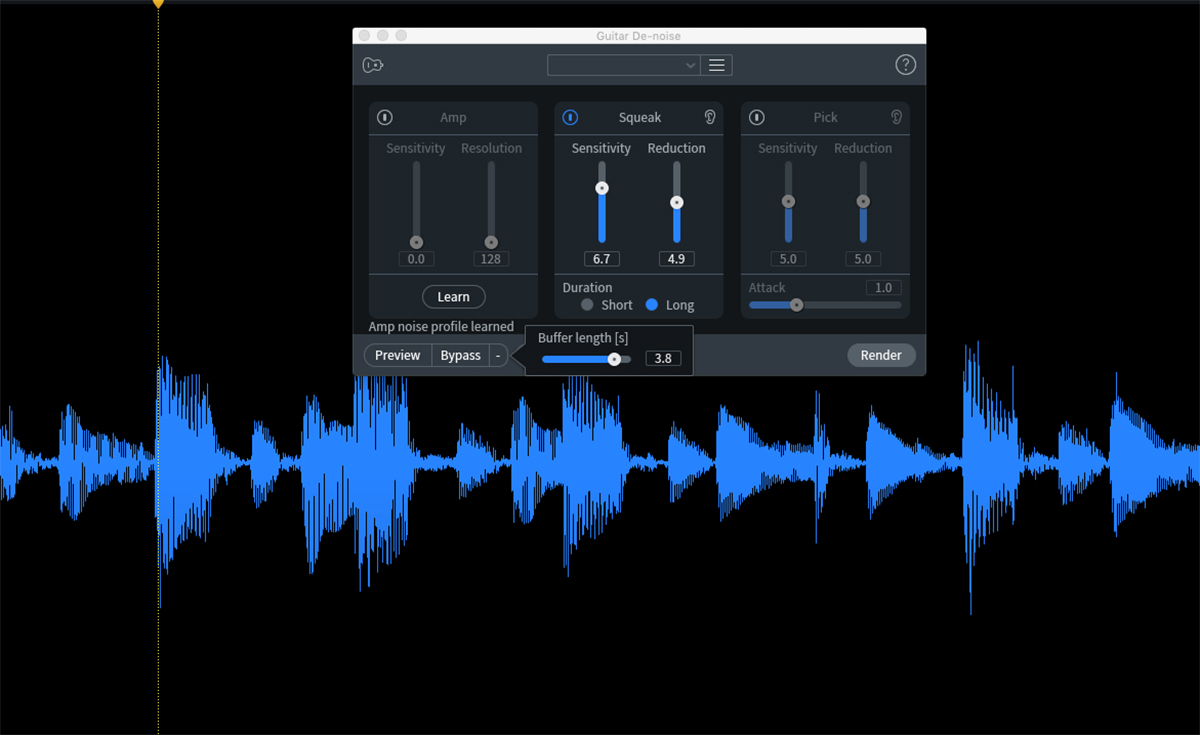
Guitar De-noise will be of more interest to recording engineers than video editors. It is used to remove recording issues, like string squeaks on acoustic guitars, pick attacks, and amp hum with electric guitars. Spectral Recovery is ideal for news and documentary editors. Need to deal with a lo-fi voice-over recorded on a phone? This module can be used to restore frequencies above 4kHz and render a fuller voice recording. The Wow & Flutter module can be used to correct speed and pitch variations in older soundtracks. Several of the existing processing effects have also been improved with better processing, more functionality, and/or improved module interfaces.
The real heavy lifting
The RX 8 standalone editor is truly a Swiss Army Knife of processing effects and at first glance might seem a bit daunting. Tracks can be displayed as a waveform, spectrogram, or a mix of both. The right side of the interface presents the selection of effects modules. You can apply single effects or create a module chain containing a series of filters. Plus there are a ton of presets. If you have a question about how a module works, click on the question mark icon in the upper right corner of the module panel and that takes you to iZotope’s website for reference information. However, you can also just start with Repair Assistant, which automatically analyzes the track and offers suggested processing. The Assistant presents A, B, and C preview options – pick one and tweak the settings further, if needed.
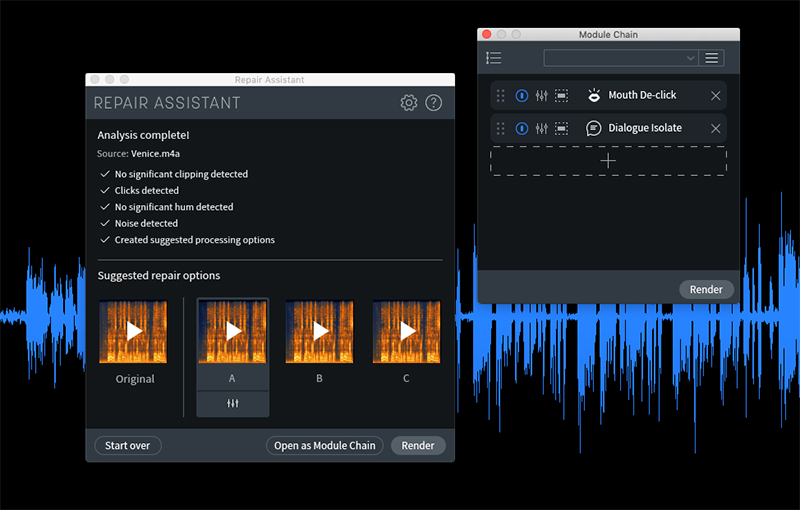
Many of the RX 8 modules are processor-intensive. Depending on the function, some can be previewed in real-time. Others need to be rendered first and then you can compare and evaluate the before and after versions. RX 8 maintains a history, so it’s easy to reject any changes that you’ve made, return to the initial state of the file, and try something different.
One interesting effect is Music Rebalance.
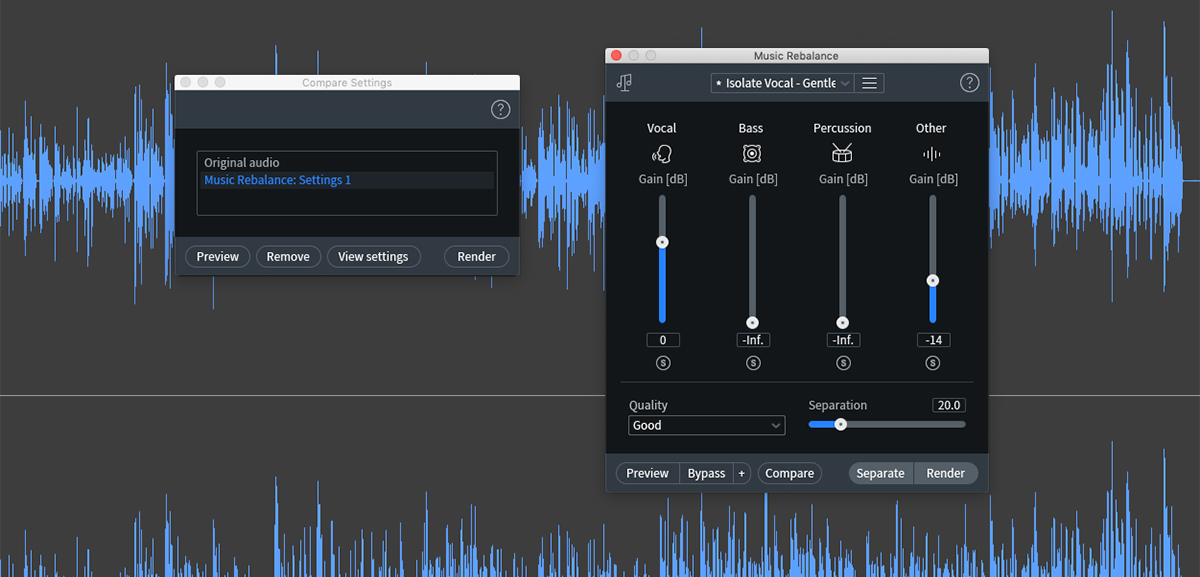
Let’s say you have a completely mixed track of voice with music. Now you want the voice to be more dominant in the mix; but, remixing the original isn’t an option. One way to get there is Music Rebalance, which isolates and separates the component parts of the mix. This enables you to change the relative levels of each in the mix. As a by-product, it will also generate separate, isolated tracks, such as just the voice track. While such isolation isn’t 100% perfect, it’s some of the best isolation that I’ve heard.
But wait… There’s more
RX 8 offers a large toolkit that goes way beyond the scope of this review. Here are just a few more highlights. If you need to get in deep for more audio surgery, then you can use Spectral Repair. It’s much like working with Photoshop. Select and then remove, replace, or “heal” noises, clicks, and other artifacts visible in the spectrogram.
Another useful feature is EQ Match (only available in RX 8 Advanced).
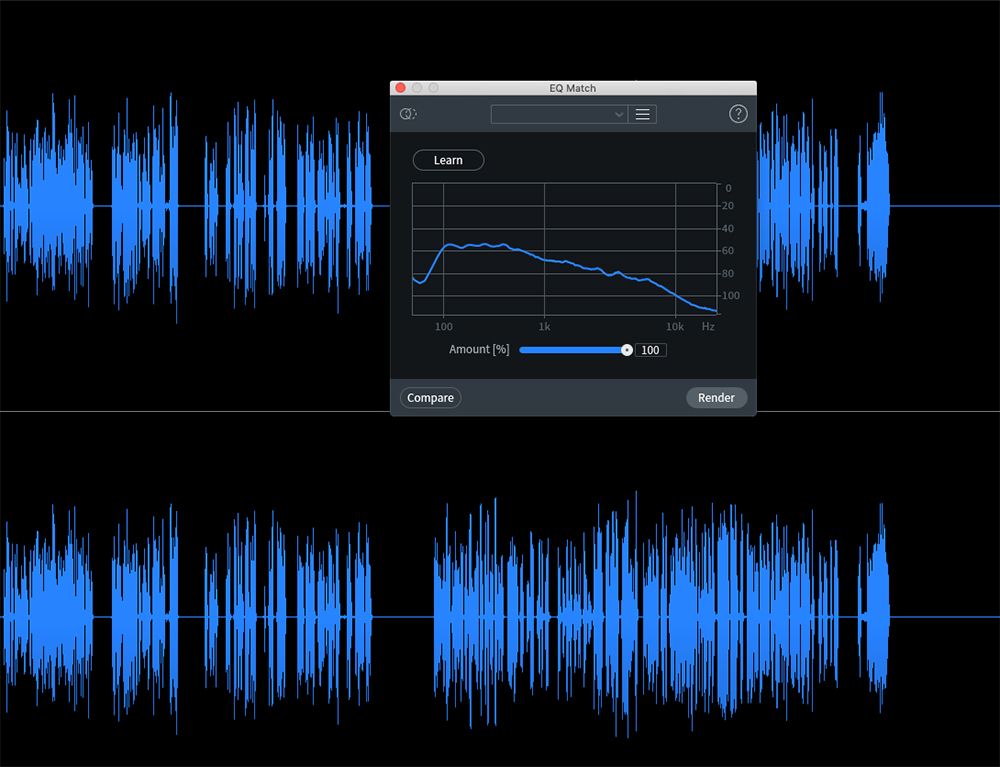
Do you have two different VO recordings done by the same talent at different times and they don’t sound the same? Use EQ Match to correct one to closely match the other. Editors who need to deliver final shows that adhere to proper loudness specs will be happy with the improved Loudness Control to monitor and adjust levels that meet broadcast targets.
The RX 8 Audio Editor can now have up to 32 tabs of individual files loaded at once. These can be combined into a single Composite tab that allows you to apply the same processing simultaneously to all. In addition, RX 8 also offers batch processing of audio files. Simply set up a module chain with the desired effects and settings, load multiple files, and apply that module chain to the batch. From there, export in a range of file formats and bit depths.
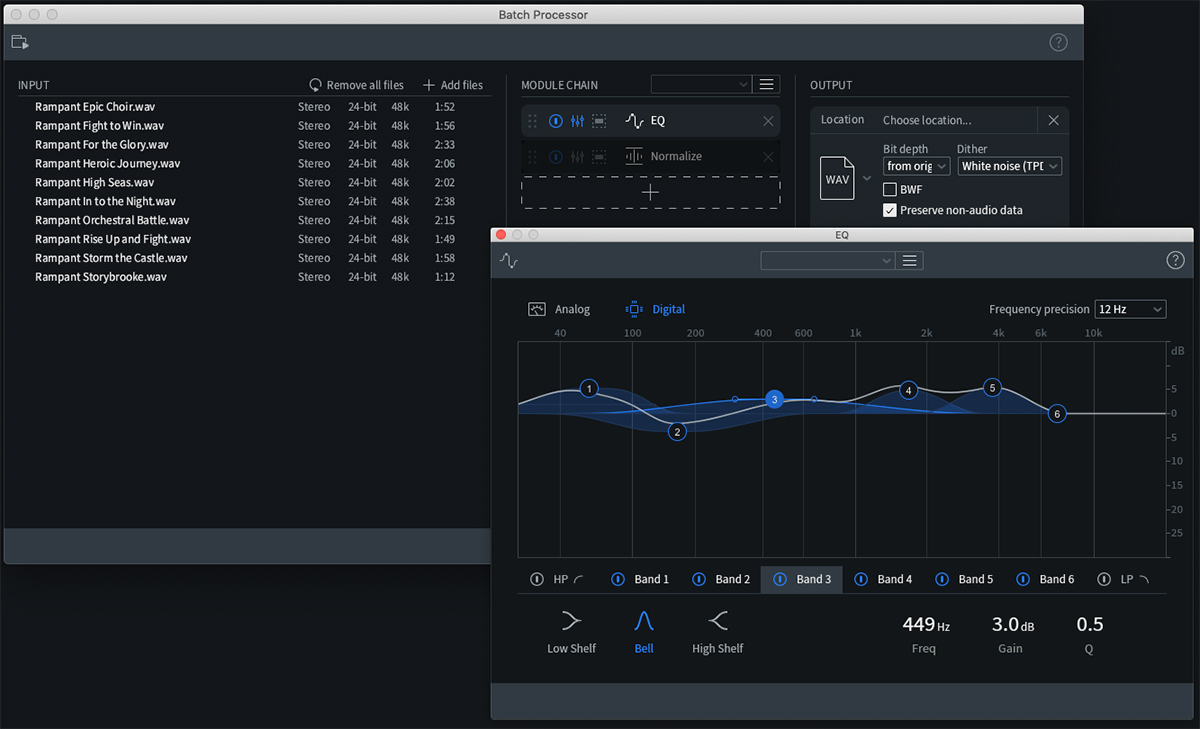
iZotope’s complete product line forms a comprehensive audio toolkit. RX 8 is the most relevant to video editors and audio post engineers. It’s a tool that will also benefit podcasters and vloggers. In short, anyone who deals with dialogue-heavy material. RX 8 represents the latest version of a product that’s being constantly improved. There certainly are competing plug-in packages that offer some similar filters as individual plug-ins. However, nothing on the market is as all-encompassing within a single tool for cleaning, repairing, and restoring audio than iZotope RX 8.

Filmtools
Filmmakers go-to destination for pre-production, production & post production equipment!
Shop Now